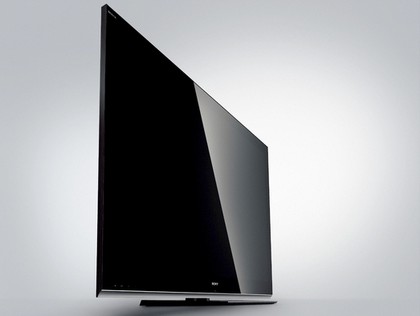
The PC's been quietly at it for years, but it wasn't until Sony's recent reveal that it'll be building stereoscopic 3D support into the PlayStation 3 with an upcoming firmware update that the world really started squealing "Ooh! Ooh! We want that!"
It's a delightful idea – but given how divisive 3D cinema has proven to be, is all this techno-kerfuffle really worth it? Here's the case for the defence, and for the prosecution….
Five reasons you'll love 3D gaming...
1. 3D is easy and free to implement
For the Playstation 3, it's all happening via free firmware updates. For the PC, it's a patch or a driver profile. For the Xbox… well, Microsoft don't seem terribly interested as yet, but given its ongoing Wi-Fi dongle, hard drive and Xbox Live price gouging, expecting something sickeningly unreasonable if it does have a crack.
In general, though, 3D is something that, aside from the initial hardware investment, is going to quietly build itself into gaming anyway. Less so for developers – even 3D propagandist Blitz Games reckons supporting stereoscopy adds 10-15% to game budgets. Hopefully the returns will make that worthwhile.
2. The Avatar method
Sign up for breaking news, reviews, opinion, top tech deals, and more.
At the moment (ie with the primarily Nvidia-endorsed 3D on PC games) we're stuck in a bit of a halfway house of token depth effects and the occasional gimmicky pop-ups. This is the same mistake 3D films were largely making until Avatar, thinking theme park rather than immersion.
Once this really gets going – most likely once the PS3 firmware updates and Sony tellys arrive – we'll see games that do what Avatar did. So, incidental effects like weather, dense vegetation and scale rather than visual stunts. The result – game worlds that feel more alive.

3D IN MIND: James Cameron's Avatar: The Game is one of very few games to be designed with 3D in mind, rather than being loosely supported after the event. Unfortunately, it was rubbish
3. 3D encourages motion
Let's face it, we gamers aren't the most mobile bunch. And why should we be? Games only require interaction from our hands. 3D, though, is an encouragement to move our heads a little, to appreciate the new sense of the depth and admire how that severed arm really juts out of the screen.
When the vista in front of us seems more there, we're going to behave accordingly. Which means no more fat necks. Possibly.
4. Glasses-free 3D is coming
Autostereoscopic 3D is on the (hopefully) not too distant horizon, promising 3D games and video without the need for bulky glasses. There are multiple approaches to this in the works, but the core idea is similar to glasses-based stereoscopy - different images are fired at each of your eyes.
The difference is that the display, not the glasses, separates the picture. The likely key to this is a degree of face-tracking so that the image can adjust itself to your position, as in general autostereoscopy has a limited field of view, the effect breaking down if you don't look at it from just the right angle.

3D TV: One of Sony's admittedly very attractive 3D Bravia TVs. The range isn't exactly famed for its affordability, alas
5. 3D is really going to come into its own with motion control
3D + motion control (ie Project Natal et al) = Augmented Reality. Potentially. Once we have a world that looks more like our world, and that is interacted with in ways similar to how we interact with our world, the false belief by so many people that games are like films with button-pushing may fall away.
Games are about creating an alternative to reality, a landscape of imagination to let our brains run riot in. If the ancient stumbling blocks of flat, two-dimensional pictures and all-too-physical controls can truly be removed, virtual reality might finally become a, well, reality instead of a dead, embarrassing buzzword.